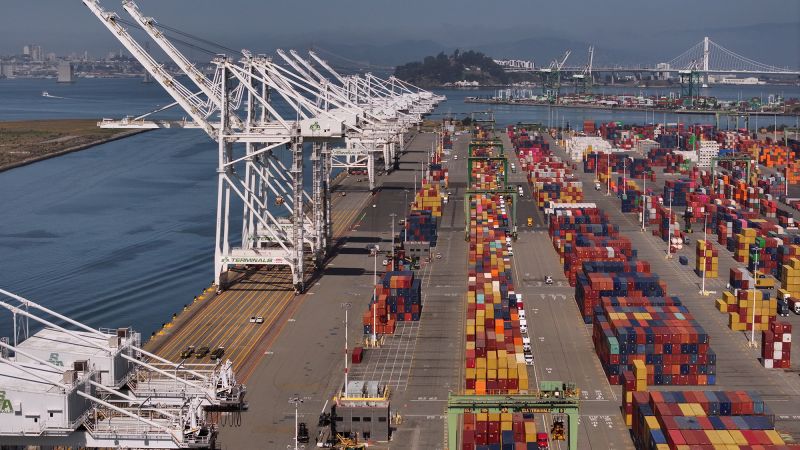In a notable development from the judicial system, a federal appeals court has intervened to pause a ruling from the Court of International Trade (CIT) that previously blocked the imposition of tariffs by President Donald Trump. This ruling, which took place on a Wednesday night, temporarily reinstates Trump’s authority to utilize emergency powers to implement tariffs. The United States Court of Appeals for the Federal Circuit ordered both parties involved to submit written arguments regarding the blockage of these tariffs, mandating that these documents be filed by early next month.
The scenario surrounding Trump’s tariffs has become increasingly complex and uncertain, particularly because these tariffs are a core component of his economic strategy. The CIT’s initial ruling had determined that Trump lacked the legal authority under the International Emergency Economic Powers Act (IEEPA) to impose extensive tariffs. This judicial decision triggered an immediate appeal from the Trump administration, setting the stage for a substantial legal conflict over a policy that the President champions as a means to renew American manufacturing. However, critics argue that these tariffs could lead to increased costs for both small businesses and consumers alike.
As if the rapid succession of rulings wasn’t enough, the appeals court’s stay came within mere hours of the CIT’s decision. In a fervent post on his social media platform, Truth Social, Trump expressed his discontent with the CIT ruling and claimed it undermined presidential power. He accused the judges of jeopardizing the country’s interests and implored the Supreme Court to intervene and overturn the CIT’s decision. Trump’s post included a passionate defense of his tariffs, emphasizing their importance and suggesting that the judges’ ruling reflected an anti-Trump bias.
Amidst this chaos, Peter Navarro, an influential trade adviser to Trump, reiterated that while the delay by the appeals court was anticipated, the administration continues to explore all strategic options to uphold its tariff agenda. Navarro confidently assured the public that the Trump administration is committed to protecting American jobs and reversing the harm perceived from the tariffs. His statements highlight a belief in the resilience of the Trump tariff agenda in the face of legal opposition.
On the flip side, the Liberty Justice Center, representing businesses opposed to the tariffs, remarked that the appeals court’s decision was merely a procedural measure while considering the government’s request for a longer stay. Senior counsel Jeffrey Schwab expressed confidence that the court will eventually deny the government’s motion, acknowledging the damages resulting from the tariffs inflicted on their clients.
The legal turmoil surrounding Trump’s tariffs unfolded rapidly, with the Court of International Trade ruling on tariffs imposed under the IEEPA, which included what Trump termed “Liberation Day” tariffs announced on April 2. Importantly, the ruling did not encompass the 25% tariffs on automobiles and steel established under a separate statute, the Trade Expansion Act’s Section 232. The swift progression of events, including a simultaneous lawsuit challenging the tariffs filed by 12 Democratic states, underscores the political and legal tensions entwined within this debate.
The oratory from White House Press Secretary Karoline Leavitt also reflects the charged atmosphere, where she denounced the CIT ruling and labeled the panel of judges as “activist.” This tension-filled narrative highlights the ongoing conflict between the executive branch’s objectives and judicial scrutiny aimed at safeguarding legal standards and practices.
Lastly, the situation has implications beyond tariffs as seen with additional court decisions. For instance, US District Judge Rudolph Contreras’s preemptive ruling against the tariffs affecting American toy companies signals the potential for widespread repercussions from Trump’s policies. Contreras noted that the IEEPA does not grant tariff authority, and while his ruling provided preliminary relief to the toy companies, it will be temporarily paused during the anticipated appeal process.
Overall, this intricate legal episode portrays the turbulence surrounding Trump’s tariff policies against a backdrop of economic strategy, legal authority, and the broader implications for American businesses and consumers. It remains to be seen how the appeals court’s involvement will shape the future of these tariffs and what lasting impact this will have on the unfolding economic landscape in the United States.



